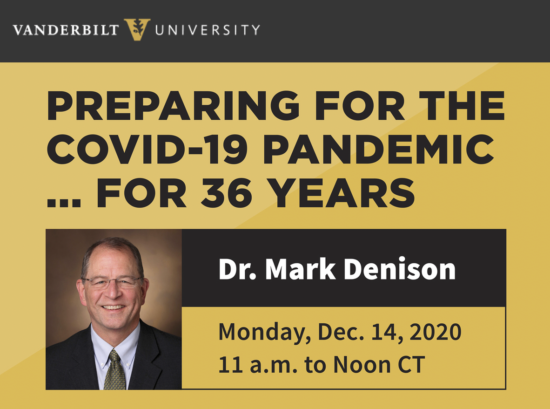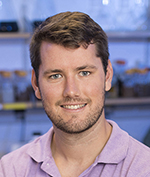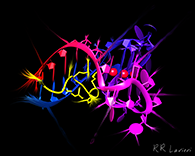EDITORIAL
Dear Basic Sciences,
This is our last newsletter of the year! We hope you’ve been enjoying Basically Speaking as much as we’ve loved highlighting all your successes and achievements.
Come the new year, we’ll be ready to continue featuring the work that you do — just make sure to keep me in the loop!
Happy holidays,
Lorena Infante Lara
Communications and Social Media Manager
NEWS
Holiday message from the dean
If you missed last week’s email from Dean Marnett, you can find it here.
Carrasco elected to the National Academy of Medicine
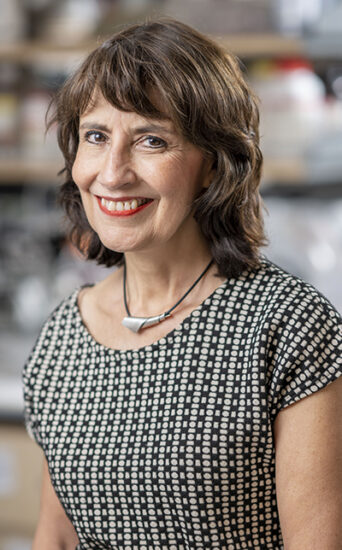 Nancy Carrasco (MPB) was elected to the National Academy of Medicine. The Academy recognized Carrasco for her pioneering public health work. Her research focuses on understanding the physiology of thyroid hormone biosynthesis and how it is affected by genetic mutations and environmental pollutants. Nancy Carrasco (MPB) was elected to the National Academy of Medicine. The Academy recognized Carrasco for her pioneering public health work. Her research focuses on understanding the physiology of thyroid hormone biosynthesis and how it is affected by genetic mutations and environmental pollutants.
Cortez named interim chair of biochemistry
 David Cortez (Biochemistry) has been named interim chair of the Department of Biochemistry, beginning on January 1, 2021. John York, the current chair, has been named chief scientific officer of food technology startup Impossible Foods and will be moving to California. During York’s term, the Department of Biochemistry became the top NIH-funded department in the nation. David Cortez (Biochemistry) has been named interim chair of the Department of Biochemistry, beginning on January 1, 2021. John York, the current chair, has been named chief scientific officer of food technology startup Impossible Foods and will be moving to California. During York’s term, the Department of Biochemistry became the top NIH-funded department in the nation.
Coogan named as PMI chair
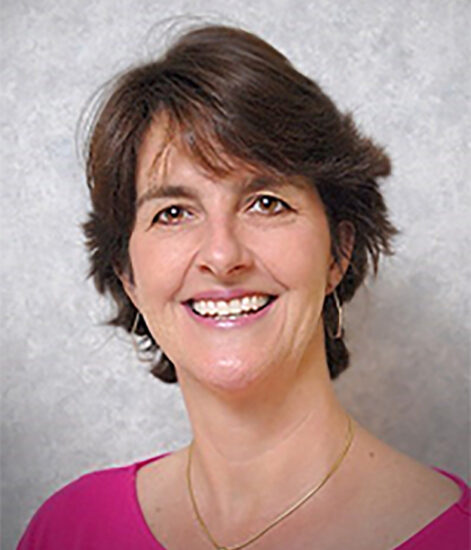 Alice Coogan, who previously served as interim chair of the Department of Pathology, Microbiology and Immunology, has been named chair. She is the seventh chair of PMI and the first female chair. Alice Coogan, who previously served as interim chair of the Department of Pathology, Microbiology and Immunology, has been named chair. She is the seventh chair of PMI and the first female chair.
Center for Structural Biology, CPB to have new directors

Walter Chazin (Biochemistry) will be stepping down from his role as director of the Center for Structural Biology at the end of the year. Come January 1, 2021, he will become the new Program Director for the Chemical and Physical Biology program, replacing current director Bruce Damon (Radiology and Radiological Sciences). Borden Lacy (PMI) will take Chazin’s place at the helm of the CSB.
Lindsley named editor in chief of the Journal of Medicinal Chemistry
 Craig Lindsley (Pharmacology) was recently named editor in chief of the Journal of Medicinal Chemistry. Linsdley, who has been at Vanderbilt since 2006, also heads the university’s Warren Center for Neuroscience Drug Discovery. His research focuses on central nervous system drug discovery, particularly on the allosteric modulation of G protein-coupled receptors and kinases, as well as ion channels. Craig Lindsley (Pharmacology) was recently named editor in chief of the Journal of Medicinal Chemistry. Linsdley, who has been at Vanderbilt since 2006, also heads the university’s Warren Center for Neuroscience Drug Discovery. His research focuses on central nervous system drug discovery, particularly on the allosteric modulation of G protein-coupled receptors and kinases, as well as ion channels.
Basic Sciences faculty honored with endowed chairs
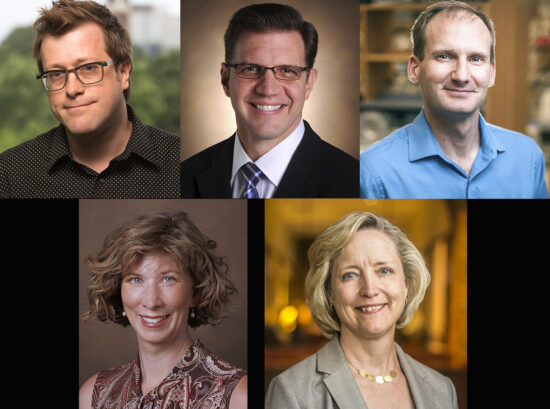
Brian Bachmann (Chemistry), Timothy Blackwell (Medicine), David Cortez (Biochemistry), Tina Iverson (Pharmacology), Kimryn Rathmell (Medicine), and Susan Wente (CDB) are among this year’s Vanderbilt University endowed chair honorees, the highest honor the university can bestow on its faculty. A future in-person event will be held to celebrate these endowed chair honorees.
Crowe wins Golden Goose Award
 James Crowe Jr. (Pediatrics) has won a 2020 “Golden Goose” Award for his scientific responses to COVID-19. Crowe has pioneered development of human monoclonal antibodies as potential treatments for viral diseases. James Crowe Jr. (Pediatrics) has won a 2020 “Golden Goose” Award for his scientific responses to COVID-19. Crowe has pioneered development of human monoclonal antibodies as potential treatments for viral diseases.
Six faculty elected as AAAS fellows
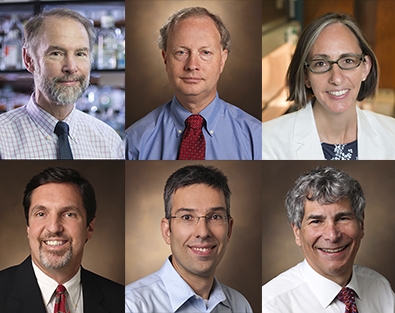
This year, six faculty were elected as fellows of the American Association for the Advancement of Science. The new fellows are Raymond Harris (Medicine), Richard Peek (Medicine), Kimryn Rathmell (Medicine), John Jeffrey Reese (Pediatrics), Antonis Rokas (Biological Sciences), and Matthew Weinger (Anesthesiology).
Siciliano named in Forbes 30 Under 30 – Science list
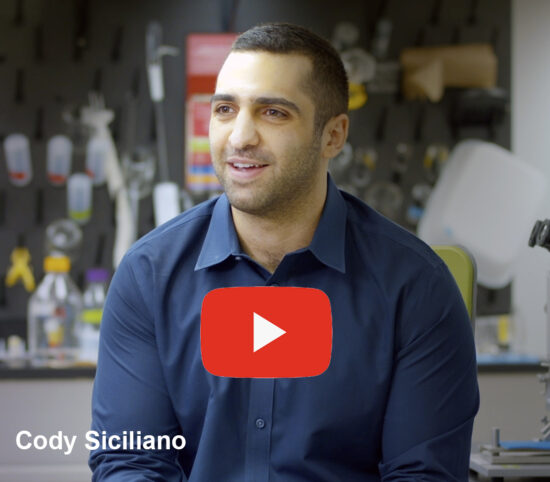 Cody Siciliano (Pharmacology) has been named to the Forbes 30 Under 30 – Science list. He is also featured in this month’s Basic Sciences faculty profile video. He provides an overview of his research into understanding neural mechanisms of individual differences in decision making. Cody Siciliano (Pharmacology) has been named to the Forbes 30 Under 30 – Science list. He is also featured in this month’s Basic Sciences faculty profile video. He provides an overview of his research into understanding neural mechanisms of individual differences in decision making.
Banerjee selected as AAAS STP Fellow
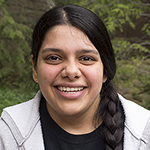 Recent graduate Amrita Banerjee (CDB, lab of Ken Lau) has been awarded a coveted spot as a AAAS Science & Technology Policy Fellow. Banerjee will be working in the office of U.S. Representative Derek Kilmer. Recent graduate Amrita Banerjee (CDB, lab of Ken Lau) has been awarded a coveted spot as a AAAS Science & Technology Policy Fellow. Banerjee will be working in the office of U.S. Representative Derek Kilmer.
Mixing mitochondrial biology, mentoring — and doughnuts
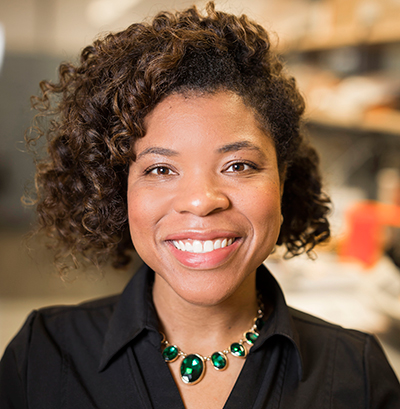
The American Society for Biochemistry and Molecular Biology recently spotlighted Breann Brown (Biochemistry), who shared her insights on the Black experience in academia and on keeping talented students in science.
Vanderbilt Winter Showcase
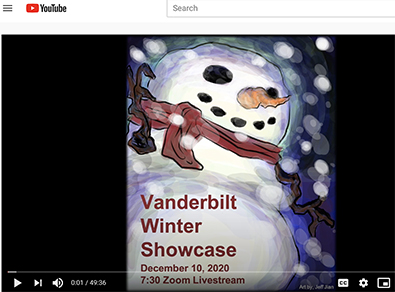
The Basic Sciences Winter Showcase gets researchers out of the lab and into the spotlight! If you missed the talent show, you can read all about it here and can view the full show here.
Students donate funds to peers through the BCC
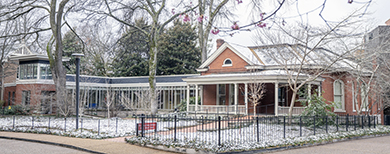 Recently, the CDB Graduate Student Association decided to do more than release a statement supporting their Black peers and the Black Lives Matter movement: they donated the entirety of their $1,000 budget — which normally funds social and outreach events — to the Vanderbilt Black Cultural Center. The BCC, an organization that supports the needs of Black staff, faculty, alumni, and students through programming, resources, and fellowship opportunities, will use the money to provide laptop computers through their student loan program. The CDB-GSA’s generous donation inspired their MPB counterparts to also donate their remaining budget to the BCC. Interested individuals are invited to donate to the BCC as well through here. Recently, the CDB Graduate Student Association decided to do more than release a statement supporting their Black peers and the Black Lives Matter movement: they donated the entirety of their $1,000 budget — which normally funds social and outreach events — to the Vanderbilt Black Cultural Center. The BCC, an organization that supports the needs of Black staff, faculty, alumni, and students through programming, resources, and fellowship opportunities, will use the money to provide laptop computers through their student loan program. The CDB-GSA’s generous donation inspired their MPB counterparts to also donate their remaining budget to the BCC. Interested individuals are invited to donate to the BCC as well through here.
New faculty: Rick Sando
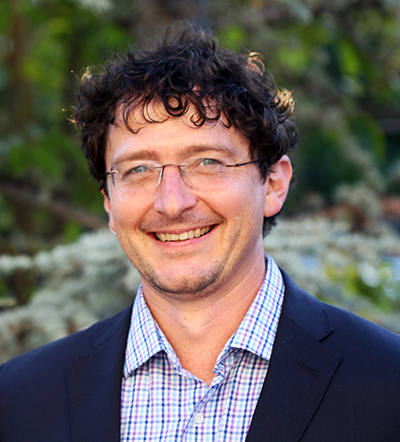 Rick Sando will join Vanderbilt’s faculty in January 2021. He is currently a postdoctoral researcher in the lab of Stanford University professor and Nobel laureate Thomas Südhof. Sando’s research will focus on the molecular logic of how the brain’s neural circuits are formed and could eventually yield clues as to how some disorders arise. Rick Sando will join Vanderbilt’s faculty in January 2021. He is currently a postdoctoral researcher in the lab of Stanford University professor and Nobel laureate Thomas Südhof. Sando’s research will focus on the molecular logic of how the brain’s neural circuits are formed and could eventually yield clues as to how some disorders arise.
Calkins named Assistant VP for Research at VUMC
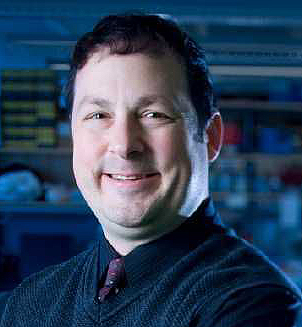 David Calkins (Ophthalmology and Visual Sciences) has been appointed Assistant Vice President for Research at Vanderbilt University Medical Center. David Calkins (Ophthalmology and Visual Sciences) has been appointed Assistant Vice President for Research at Vanderbilt University Medical Center.
Burnette lab members make a clean sweep of ASCB 2020 image contest
 Three members of Dylan Burnette’s (CDB) lab recently took home top honors at the American Society for Cell Biology’s image and video contest. Burnette and James Hayes (CDB, Burnette lab) tied for first place along with Nilay Taneja (CDB, Burnette lab); the third first-place winner, Aidan Fenix, is himself a Burnette lab alumnus. Burnette took second-place honors, and both Burnette and Hayes brought home the third-place prize. Three members of Dylan Burnette’s (CDB) lab recently took home top honors at the American Society for Cell Biology’s image and video contest. Burnette and James Hayes (CDB, Burnette lab) tied for first place along with Nilay Taneja (CDB, Burnette lab); the third first-place winner, Aidan Fenix, is himself a Burnette lab alumnus. Burnette took second-place honors, and both Burnette and Hayes brought home the third-place prize.
Anti-inflammatory therapy now in clinical trials for eczema
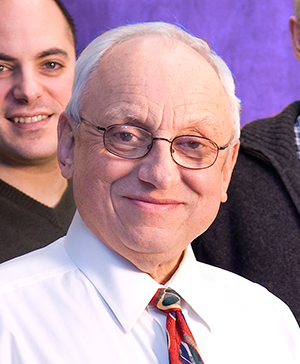 A cell-penetrating, anti-inflammatory peptide developed by Jacek Hawiger (Medicine) and licensed to biopharmaceutical company Amytrx, has been approved by the FDA for testing as a potential therapeutic for mild to moderate eczema. The peptide, known as AMTX-100, has been in clinical trials since March. A cell-penetrating, anti-inflammatory peptide developed by Jacek Hawiger (Medicine) and licensed to biopharmaceutical company Amytrx, has been approved by the FDA for testing as a potential therapeutic for mild to moderate eczema. The peptide, known as AMTX-100, has been in clinical trials since March.
Vega awarded dissertation enhancement grant
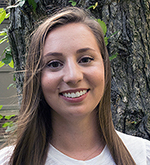 Graduate student Paige Vega (CDB, lab of Ken Lau) has received a Dissertation Enhancement Grant from the Russell G. Hamilton Graduate Leadership Institute at Vanderbilt. She will use the funds to analyze the effects of long-term, efficient, and specific Paneth cell ablation on the maintenance of the intestinal stem cell niche. Graduate student Paige Vega (CDB, lab of Ken Lau) has received a Dissertation Enhancement Grant from the Russell G. Hamilton Graduate Leadership Institute at Vanderbilt. She will use the funds to analyze the effects of long-term, efficient, and specific Paneth cell ablation on the maintenance of the intestinal stem cell niche.
Saleh to serve on VU Appellate Review Board
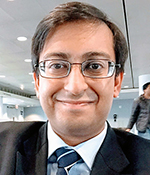 Nabil Saleh (CDB, lab of Ken Lau) was recently appointed to serve a two-year term on the university’s Appellate Review Board as the student representative of the Graduate School. It required a recommendation from the student body, a nomination from the Dean of the Graduate School, and an appointment by Provost Susan Wente. Nabil Saleh (CDB, lab of Ken Lau) was recently appointed to serve a two-year term on the university’s Appellate Review Board as the student representative of the Graduate School. It required a recommendation from the student body, a nomination from the Dean of the Graduate School, and an appointment by Provost Susan Wente.
AWARDS & FUNDING
IMSD program funding renewed
 The NIH has awarded a grant to continue Vanderbilt’s Initiative for Maximizing Student Diversity program, which supports the success of biomedical research graduate students from underrepresented groups. The program, led by Roger Chalkley, senior associate dean for biomedical research education and training, and Linda Sealy, Basic Sciences senior advisor on issues relating to equity, diversity and inclusion, has supported more than 165 graduate students. The NIH has awarded a grant to continue Vanderbilt’s Initiative for Maximizing Student Diversity program, which supports the success of biomedical research graduate students from underrepresented groups. The program, led by Roger Chalkley, senior associate dean for biomedical research education and training, and Linda Sealy, Basic Sciences senior advisor on issues relating to equity, diversity and inclusion, has supported more than 165 graduate students.
Expanding the VI4-AiR program
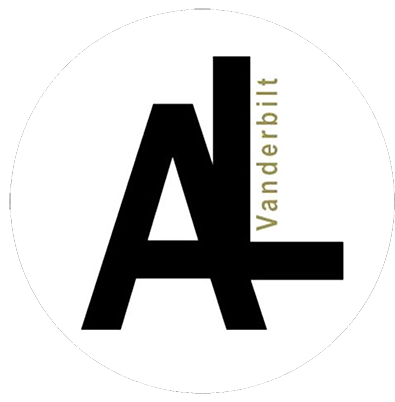 The Burroughs Wellcome Fund has awarded the VI4 Artist-in-Residence program, established through a collaboration with ArtLab, a three-year grant to expand AiR into other places in the Southeast. The Burroughs Wellcome Fund has awarded the VI4 Artist-in-Residence program, established through a collaboration with ArtLab, a three-year grant to expand AiR into other places in the Southeast.
Vanderbilt-Ancora partnership advances research for Charcot-Marie-Tooth disease
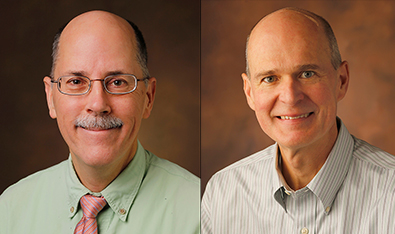 Ancora Innovation, LLC, announced it will fund further research into therapeutics for Charcot-Marie-Tooth disease, an inherited condition that damages peripheral nerves. The research will continue to be led by Chuck Sanders (Biochemistry), who will also be joined by Bruce Carter (Biochemistry). Ancora Innovation, LLC, announced it will fund further research into therapeutics for Charcot-Marie-Tooth disease, an inherited condition that damages peripheral nerves. The research will continue to be led by Chuck Sanders (Biochemistry), who will also be joined by Bruce Carter (Biochemistry).
Millis receives Chan Zuckerberg Initiative grant to expand access to imaging technologies
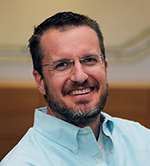 Bryan Millis (CDB) has been awarded a grant from the Chan Zuckerberg Initiative’s Imaging Scientists program. The award will go toward building an immersive virtual education platform to expand instruction and accessibility of high-end microscopy techniques within and beyond the Vanderbilt research community. VUIIS scientists also received a CZI grant to develop deep-tissue imaging methods. Bryan Millis (CDB) has been awarded a grant from the Chan Zuckerberg Initiative’s Imaging Scientists program. The award will go toward building an immersive virtual education platform to expand instruction and accessibility of high-end microscopy techniques within and beyond the Vanderbilt research community. VUIIS scientists also received a CZI grant to develop deep-tissue imaging methods.
Byndloss receives V Scholar Award
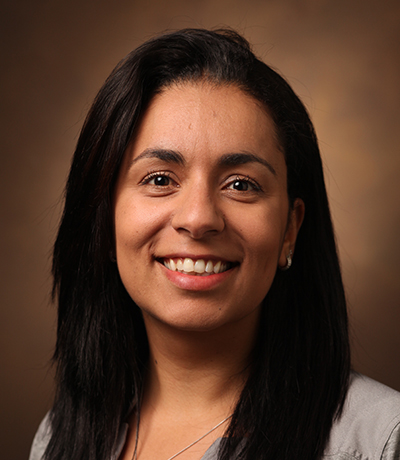 The V Foundation for Cancer Research has awarded Mariana Byndloss (PMI) a V Scholar Award to study the links between obesity, the gut microbiome and colorectal cancer. The V Foundation for Cancer Research has awarded Mariana Byndloss (PMI) a V Scholar Award to study the links between obesity, the gut microbiome and colorectal cancer.
Team awarded grant to continue T-cell immune response research
 Matt Lang (Chemical and Biomolecular Engineering) and his collaborators have been awarded a five-year grant that involves characterizing the biological and structural features of T-cell signaling. The National Institute of Allergy and Infectious Diseases, the division of the National Institutes of Health that studies COVID-19 and seasonal flu, awarded the group a combined $11 million program P01 grant. Matt Lang (Chemical and Biomolecular Engineering) and his collaborators have been awarded a five-year grant that involves characterizing the biological and structural features of T-cell signaling. The National Institute of Allergy and Infectious Diseases, the division of the National Institutes of Health that studies COVID-19 and seasonal flu, awarded the group a combined $11 million program P01 grant.
Paper by Centanni recognized with NEATOR award
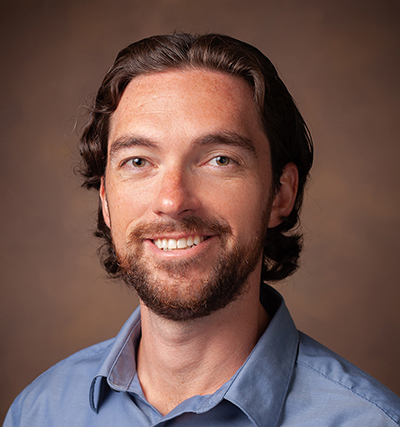
A 2020 Neuropsychopharmacology paper by postdoc Sam Centanni (MPB, lab of Danny Winder) was recently recognized with the 2020 Neuropsychopharmacology Editors’ Award for a Transformative Original Report. View their acceptance speech here.
VPA recognizes postdoc efforts
 The 14th annual symposium of the Vanderbilt Postdoc Association recognized a number of award winners, including Jessica Thomas (lab of Roger Colbran) for best poster presentation and Sam Centanni (lab of Danny Winder), postdoc honorable mention award. The 14th annual symposium of the Vanderbilt Postdoc Association recognized a number of award winners, including Jessica Thomas (lab of Roger Colbran) for best poster presentation and Sam Centanni (lab of Danny Winder), postdoc honorable mention award.
NEW DISCOVERIES
Deceiving SARS-CoV-2 and revealing the cause of Charcot-Marie-Tooth disease
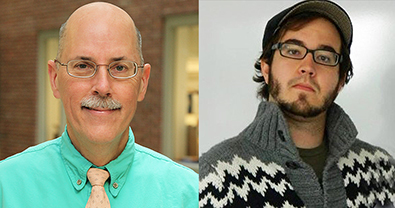 Chuck Sanders (Biochemistry) lab graduate student James Hutchinson is working on altering the novel coronavirus’s envelope protein to turn it into a Trojan horse to fight against COVID-19. Their approach can neutralize the virus during assembly, thus ending its ability to infect other cells. The Sanders group has also recently shed light on the cause of CMT disease, putting them on the road to developing therapeutic approaches for the disease that affects 1 in 2,500 people. Chuck Sanders (Biochemistry) lab graduate student James Hutchinson is working on altering the novel coronavirus’s envelope protein to turn it into a Trojan horse to fight against COVID-19. Their approach can neutralize the virus during assembly, thus ending its ability to infect other cells. The Sanders group has also recently shed light on the cause of CMT disease, putting them on the road to developing therapeutic approaches for the disease that affects 1 in 2,500 people.
Researchers create molecular ‘atlas’ of GI tract neurons
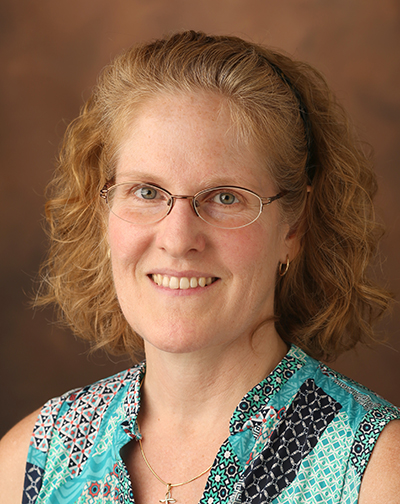 Michelle Southard-Smith (CDB) and colleagues have generated the first comprehensive molecular “atlas” of genes expressed by the neuronal cells within the intestine that coordinate the functions of the gastrointestinal tract. The atlas offers a foundation for future studies aimed at advancing the understanding and treatment of GI diseases. Michelle Southard-Smith (CDB) and colleagues have generated the first comprehensive molecular “atlas” of genes expressed by the neuronal cells within the intestine that coordinate the functions of the gastrointestinal tract. The atlas offers a foundation for future studies aimed at advancing the understanding and treatment of GI diseases.
Study reveals new strategy for reducing tumor growth, metastasis
 A team of Vanderbilt investigators led by Ann Richmond (Pharmacology) has discovered that blocking a certain signaling pathway boosts antitumor immunity and reduces tumor growth and metastasis in models of breast cancer and melanoma. A team of Vanderbilt investigators led by Ann Richmond (Pharmacology) has discovered that blocking a certain signaling pathway boosts antitumor immunity and reduces tumor growth and metastasis in models of breast cancer and melanoma.
Regulating the length of microvilli
 Recent work from the lab of Matt Tyska (CDB) was recognized as an Editor’s Pick and cover for the November Journal of Biological Chemistry issue. Tyska’s lab also recently landed the cover of the December 1 issue of Molecular Biology of the Cell. Both articles are germane to the regulation of the length of microvilli. Recent work from the lab of Matt Tyska (CDB) was recognized as an Editor’s Pick and cover for the November Journal of Biological Chemistry issue. Tyska’s lab also recently landed the cover of the December 1 issue of Molecular Biology of the Cell. Both articles are germane to the regulation of the length of microvilli.
New melanoma research brings understanding of cellular resistance to cancer treatment

Vito Quaranta (Biochemistry) and colleagues have identified the enzymes that keep tumor cells growing in the presence of drug treatment, opening the door to stopping these cells dead in their tracks. Their research was published in the journal Cancer Research and is key for identifying enzymes that enable other cancers’ drug-tolerant persister cells in hopes of exploiting their vulnerabilities.
Preserving gut mucus architecture
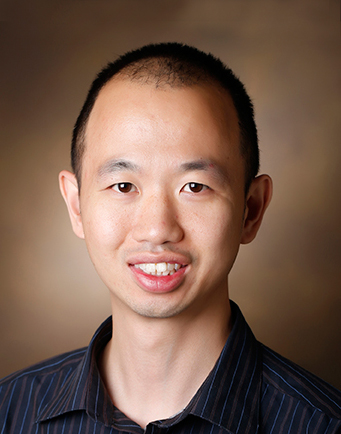 Ken Lau (CDB) and his lab have established a method for preserving microbes and host cells together using a mucus-adhesive polymer called Poloxamer 407. Their approach, reported in npj Biofilms and Microbiomes, makes it possible for researchers to study complex host-microbe interactions in native tissue environments, and potentially in clinical specimens. Ken Lau (CDB) and his lab have established a method for preserving microbes and host cells together using a mucus-adhesive polymer called Poloxamer 407. Their approach, reported in npj Biofilms and Microbiomes, makes it possible for researchers to study complex host-microbe interactions in native tissue environments, and potentially in clinical specimens.
Developing a publicly available COVID-19 animal susceptibility prediction tool
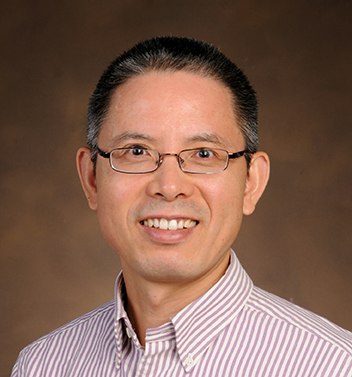 A cadre of Vanderbilt researchers has developed a tool to understand and predict animal susceptibility to SARS-CoV-2, providing evidence that horses and camels may be at increased risk of the virus. Wenbiao Chen (MPB) is the corresponding author for this paper, published in the Federation of American Societies for Experimental Biology Journal. A cadre of Vanderbilt researchers has developed a tool to understand and predict animal susceptibility to SARS-CoV-2, providing evidence that horses and camels may be at increased risk of the virus. Wenbiao Chen (MPB) is the corresponding author for this paper, published in the Federation of American Societies for Experimental Biology Journal.
Making counterintuitive discoveries about immune-like characteristics of cells, chemotherapy’s impact on tissue growth
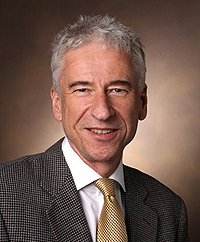 Ian Macara (CDB) reports in Developmental Cell that certain chemotherapeutic agents used to treat tumors can have the opposite effect of tissue overgrowth in normal, intact mammary glands, epidermis and hair follicles.The findings have broad implications for diseases associated with the immune system like psoriasis, as well as cancer and stem cell research. Ian Macara (CDB) reports in Developmental Cell that certain chemotherapeutic agents used to treat tumors can have the opposite effect of tissue overgrowth in normal, intact mammary glands, epidermis and hair follicles.The findings have broad implications for diseases associated with the immune system like psoriasis, as well as cancer and stem cell research.
Medium spiny neurons and “sticking” to bad habits
 Recent work from the labs of Brad Grueter (Anesthesiology) and Heidi Hamm (Pharmacology), reveals processes that may disrupt communication between the nucleus accumbens and other areas of the brain. Recent work from the labs of Brad Grueter (Anesthesiology) and Heidi Hamm (Pharmacology), reveals processes that may disrupt communication between the nucleus accumbens and other areas of the brain.
Detailing the inflammatory response’s early events
 The lab of Henrique Serezani (Medicine) recently found that a protein called LTB4 is required for the protective effects of IL-1 beta in an animal model of skin infection. The lab of Henrique Serezani (Medicine) recently found that a protein called LTB4 is required for the protective effects of IL-1 beta in an animal model of skin infection.
Parsing SARS-CoV-2’s interactions with the host
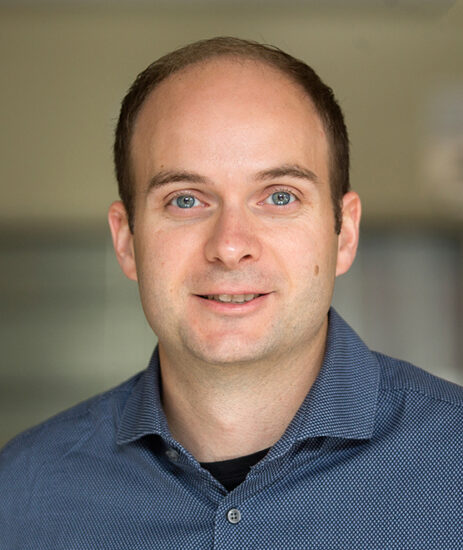 The lab of Lars Plate (Chemistry) has been researching the differences and similarities between how three coronaviruses — including the one that causes COVID-19 — interact with their host, leading to insights into possible new therapeutic targets. The lab of Lars Plate (Chemistry) has been researching the differences and similarities between how three coronaviruses — including the one that causes COVID-19 — interact with their host, leading to insights into possible new therapeutic targets.
Possible COVID-19 “decoy”
 Robert Coffey (Medicine) and an international research team found that the presence of a recombinant, soluble form of human ACE2 reduced viral growth and inhibited infection. Their findings, published in the journal Gastroenterology, have important implications for the development of strategies to prevent infection by SARS-CoV-2, as well as other pathogenic coronaviruses. Robert Coffey (Medicine) and an international research team found that the presence of a recombinant, soluble form of human ACE2 reduced viral growth and inhibited infection. Their findings, published in the journal Gastroenterology, have important implications for the development of strategies to prevent infection by SARS-CoV-2, as well as other pathogenic coronaviruses.
Factor involved in stomach injury response identified
 James Goldenring (Medicine) and fellow researchers have identified a key factor that coordinates the body’s repair response to severe injury in the stomach caused, most commonly, by infection by the bacterium Helicobacter pylori. James Goldenring (Medicine) and fellow researchers have identified a key factor that coordinates the body’s repair response to severe injury in the stomach caused, most commonly, by infection by the bacterium Helicobacter pylori.
| ![CAS - Basic Sciences - Internal E-Newsletter [Vanderbilt University]](https://cdn.vanderbilt.edu/vu-URL/wp-content/uploads/sites/119/2021/04/19142723/basically-speaking-banner-04-2021.jpg)
 Nancy Carrasco (MPB) was
Nancy Carrasco (MPB) was  David Cortez (Biochemistry) has been
David Cortez (Biochemistry) has been  Alice Coogan, who previously served as interim chair of the Department of Pathology, Microbiology and Immunology, has been
Alice Coogan, who previously served as interim chair of the Department of Pathology, Microbiology and Immunology, has been 
 Craig Lindsley (Pharmacology) was recently
Craig Lindsley (Pharmacology) was recently 
 James Crowe Jr. (Pediatrics) has won a 2020
James Crowe Jr. (Pediatrics) has won a 2020 

 Recent graduate Amrita Banerjee (CDB, lab of Ken Lau) has been
Recent graduate Amrita Banerjee (CDB, lab of Ken Lau) has been 

 Recently, the CDB Graduate Student Association decided to do more than release a statement supporting their Black peers and the Black Lives Matter movement: they donated the entirety of their $1,000 budget — which normally funds social and outreach events — to the Vanderbilt Black Cultural Center. The BCC, an organization that supports the needs of Black staff, faculty, alumni, and students through programming, resources, and fellowship opportunities, will use the money to provide laptop computers through their student loan program. The CDB-GSA’s generous donation inspired their MPB counterparts to also donate their remaining budget to the BCC. Interested individuals are invited to donate to the BCC as well through
Recently, the CDB Graduate Student Association decided to do more than release a statement supporting their Black peers and the Black Lives Matter movement: they donated the entirety of their $1,000 budget — which normally funds social and outreach events — to the Vanderbilt Black Cultural Center. The BCC, an organization that supports the needs of Black staff, faculty, alumni, and students through programming, resources, and fellowship opportunities, will use the money to provide laptop computers through their student loan program. The CDB-GSA’s generous donation inspired their MPB counterparts to also donate their remaining budget to the BCC. Interested individuals are invited to donate to the BCC as well through  Rick Sando
Rick Sando  David Calkins (Ophthalmology and Visual Sciences) has been
David Calkins (Ophthalmology and Visual Sciences) has been  Three members of Dylan Burnette’s (CDB) lab recently took home top honors at the American Society for Cell Biology’s
Three members of Dylan Burnette’s (CDB) lab recently took home top honors at the American Society for Cell Biology’s  A cell-penetrating, anti-inflammatory peptide developed by Jacek Hawiger (Medicine) and licensed to biopharmaceutical company Amytrx,
A cell-penetrating, anti-inflammatory peptide developed by Jacek Hawiger (Medicine) and licensed to biopharmaceutical company Amytrx,  Graduate student Paige Vega (CDB, lab of Ken Lau) has received a
Graduate student Paige Vega (CDB, lab of Ken Lau) has received a Nabil Saleh (CDB, lab of Ken Lau) was recently appointed to serve a two-year term on the university’s
Nabil Saleh (CDB, lab of Ken Lau) was recently appointed to serve a two-year term on the university’s  The NIH has
The NIH has  The Burroughs Wellcome Fund has awarded the
The Burroughs Wellcome Fund has awarded the  Ancora Innovation, LLC, announced it will
Ancora Innovation, LLC, announced it will  Bryan Millis (CDB) has been
Bryan Millis (CDB) has been  The V Foundation for Cancer Research
The V Foundation for Cancer Research  Matt Lang (Chemical and Biomolecular Engineering) and his collaborators have been
Matt Lang (Chemical and Biomolecular Engineering) and his collaborators have been 
 The 14th annual symposium of the Vanderbilt Postdoc Association recognized a number of
The 14th annual symposium of the Vanderbilt Postdoc Association recognized a number of  Chuck Sanders (Biochemistry) lab graduate student James Hutchinson is working on altering the novel coronavirus’s envelope protein to turn it into a Trojan horse to fight against COVID-19.
Chuck Sanders (Biochemistry) lab graduate student James Hutchinson is working on altering the novel coronavirus’s envelope protein to turn it into a Trojan horse to fight against COVID-19. Michelle Southard-Smith (CDB) and colleagues have generated the first comprehensive
Michelle Southard-Smith (CDB) and colleagues have generated the first comprehensive  A team of Vanderbilt investigators led by Ann Richmond (Pharmacology)
A team of Vanderbilt investigators led by Ann Richmond (Pharmacology)  Recent work from the lab of Matt Tyska (CDB) was recognized as an
Recent work from the lab of Matt Tyska (CDB) was recognized as an
 Ken Lau (CDB) and his lab have established a method for preserving microbes and host cells together using a mucus-adhesive polymer called Poloxamer 407. Their approach,
Ken Lau (CDB) and his lab have established a method for preserving microbes and host cells together using a mucus-adhesive polymer called Poloxamer 407. Their approach,  A cadre of Vanderbilt researchers has
A cadre of Vanderbilt researchers has  Ian Macara (CDB)
Ian Macara (CDB) 
 The lab of Henrique Serezani (Medicine)
The lab of Henrique Serezani (Medicine)  The lab of Lars Plate (Chemistry) has been researching the differences and similarities between how three coronaviruses — including the one that causes COVID-19 —
The lab of Lars Plate (Chemistry) has been researching the differences and similarities between how three coronaviruses — including the one that causes COVID-19 —  Robert Coffey (Medicine) and an international research team found that the presence of a recombinant, soluble form of human ACE2 reduced viral growth and inhibited infection. Their
Robert Coffey (Medicine) and an international research team found that the presence of a recombinant, soluble form of human ACE2 reduced viral growth and inhibited infection. Their  James Goldenring (Medicine) and fellow researchers
James Goldenring (Medicine) and fellow researchers 
 mRNA vaccines??
mRNA vaccines??

